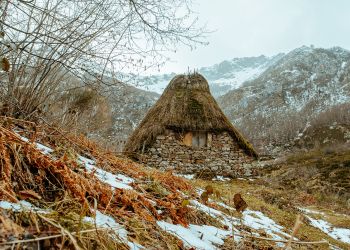How to survey historic places to the best possible standards.
What is the difference between surveying a property that is 20 years old vs 200 years old? They are both homes, right? Well in a sense yes, they are both homes, likely have walls, roofs and floors. But is in the detail that this changes, for instance is the wall made of a single skin i.e. solid wall, or is it two skins making it a cavity? Are the walls made of brick? Stone or timber? This is the detail and for the purposes of the Royal Institution of Chartered Surveyors and Historic England a traditional or old building is one that was built pre-1930.
So, what standards will come into play when surveying historic buildings?
Firstly, the most important standard that every surveyor working with traditional buildings should know and understand is BS7913:2013 Guide to the Conservation of Historic Buildings. BS 7913 describes best practice in the management and treatment of historic buildings. It applies to historic buildings with or without statutory protection. BS 7913 will take you through all stages from initially looking at a building through to the completion of appropriate work.
The second standard is the new RICS Joint Damp Methodology (Investigation of Moisture and its Effects in Traditional Buildings). The following methodology outlines the principles that surveyors should adopt to deliver best practice in investigating moisture related issues in traditional buildings. It goes on to list out specific items that the surveyor should have knowledge of and consider at each stage of the diagnostic investigation and repair process.
The next two are really helpful if you have had a surveyor state that you have rising damp and need a damp survey etc. and comes in really handy when doing damp surveys.
British standard- BS 6576: Code of practice for diagnosing rising damp in walls and buildings and installation of damp-proof courses, quite clearly says; ‘Electrical moisture meter…Surface measurements cannot alone give proof of rising damp, so further evidence may, where permitted, be obtained by…measurements taken within the depth of the wall. Chemical (carbide) or gravimetric methods can be used.’
British Standard – BS 5250: Code of practice for controlling condensation in buildings, says; ‘Accurate measurements of the moisture content of brick or mortar cannot be obtained by the use of electrical moisture meters because the presence of salts increases the electrical conductance of the water, giving falsely high readings. Gravimetric methods carried out on samples taken from the fabric give the most reliable results. The use of chemical (carbide) absorption type moisture meters will give a result in a short space of time and are almost as reliable.’
There are many other standards that come into play when surveying old buildings, but the greatest differences come in understanding that old buildings are built differently, they perform differently and that behave differently. If you understand that you are already halfway there.
